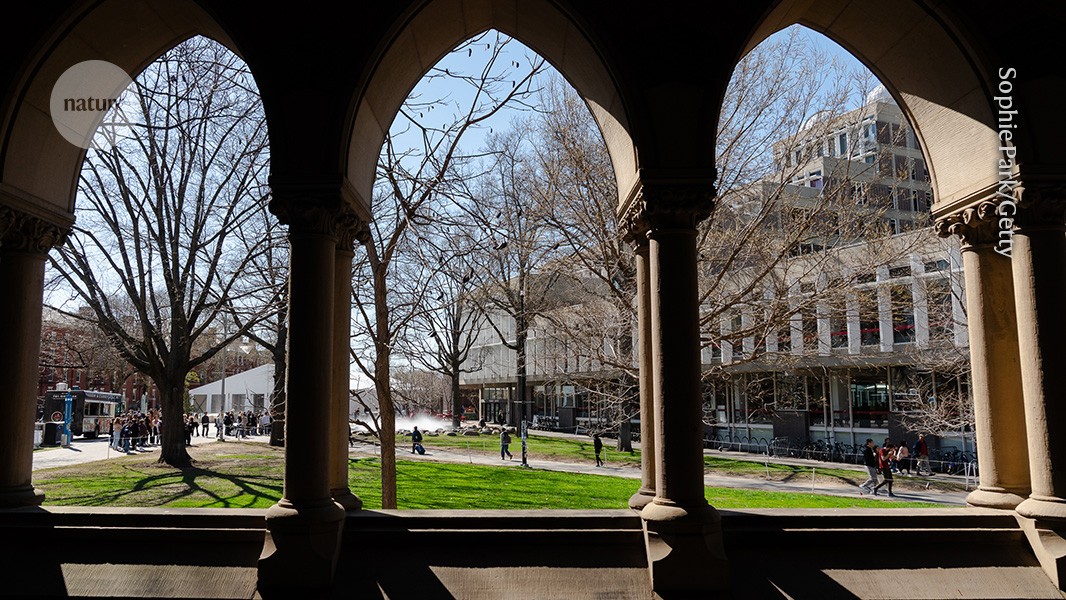
WWW.VOX.COM
Is this controversial policy helping kids — or making school more difficult?
This story originally appeared in Kids Today, Vox’s newsletter about kids, for everyone. Sign up here for future editions.It’s a stressful time to be a kid.Young people are watching environmental disasters, school shootings, and economic and political uncertainty, all with a level of media (or at least social media) coverage that would have been unimaginable for previous generations. Against this backdrop, they’re also expected to have their lives figured out by an early age, and rack up a laundry list of achievements to cite in an increasingly lengthy and comparison-filled college application process. “You almost have to start working on your college career in middle school,” Jennifer Rothman, director of youth and young adult initiatives at the National Alliance on Mental Illness, told me.Given all this, it’s perhaps no surprise that kids need a break. Mental health days — a day off to deal with depression or anxiety, or simply to tend to mental well-being, gained currency among adults during the early part of the Covid-19 pandemic — and they’ve taken off among young people as well, with at least 12 states passing laws allowing excused absences for mental health reasons. But as chronic absenteeism remains a problem around the country, some school officials are worried that giving kids mental health days could encourage an attitude that school attendance is optional. “There’s a lot of misconceptions about how important it is to be in school — if I didn’t come to school at all in the pandemic, why do I urgently have to keep coming to school now?” Kent Pekel, superintendent of Rochester Public Schools in Minnesota, said during a webinar last year, according to EdWeek.While concerns about mental health are far from gone, they’re also being joined by fears of learning loss and the acknowledgement that missing even a few days of school can be detrimental to kids’ education. There’s also a widespread worry that students are reaching college, the job market, and the ballot box without basic skills like reading.RelatedSome experts also caution that taking a day off for the wrong reasons could actually make matters worse. “When you get yourself in the trap or downward slide of school avoidance, that’s really hard, and it happens really quick,” Sarah Cain Spannagel, a clinical psychologist in Cleveland who works with children and families, told me.How can kids, families, and educators navigate all this? How do we support kids through a time that’s often scary even for adults, while also making sure they get an education? I posed these questions to experts this week, and the answers I got suggested that while a day off won’t cure a kid’s depression or anxiety (sadly, that doesn’t work for grown-ups, either), time for reset and recovery can help protect kids from getting to a crisis point in the first place. A day off could even show families and schools what’s missing from a kid’s life, leading to less stress and pressure in the future. A mental health crisis for teensDoctors and teens alike have been especially concerned with young people’s mental health in the last five years, with Vivek Murthy, the US surgeon general under President Joe Biden, warning in 2021 of a mental health crisis among adolescents. More recent surveys have shown some improvement in the prevalence of teen sadness and depression, but clinicians are still seeing “alarming rates” of anxiety and depression, as well as suicidality and self-harm, Amber Childs, a psychiatry professor at Yale School of Medicine who works on youth mental health, told me.Allowing mental health days can also help destigmatize mental illness, and encourage young people to be open about any struggles they’re going through, rather than hiding them, kids and experts say. Among teens, mental health days have emerged as a popular coping strategy. Students began advocating for them even before Covid hit, and lawmakers in states from Oregon to Utah have agreed, giving kids a designated number of mental health days per year, or simply changing the definition of an excused absence to include psychological reasons.While hard numbers on how many days kids are actually taking are hard to come by, the practice seems to be increasing, perhaps driven by a growing awareness that psychological well-being is as important as physical health, Spannagel said.The concept of a mental health day might sound pretty foreign to previous generations. Growing up, “I never got any days off,” Rothman of the National Alliance on Mental Illness, who has three teenagers, told me. “Your parents were kind of like, you either have to have a fever or you’re throwing up, that’s the only way you’re staying home.”But adults today need to understand “how different the world is now for our kids than it was for us,” Rothman said.Because of social media, young people today don’t have much downtime from social interaction, news, or, well, anything really, Childs told me. Being able to unplug “not only from our digitally enabled lives, but also from the routine things that happen in the social and academic space” can be positive, “whether or not something bad is happening.”Allowing mental health days can also help destigmatize mental illness, and encourage young people to be open about any struggles they’re going through, rather than hiding them, kids and experts say. The right way to use mental health daysHowever, the way we often think about mental health days might not be the most helpful for kids. Rather than using them when a child is already in crisis — “taking the release valve off of the pressure cooker,” as Childs put it — families and schools should use them as “a preventative tool” to keep that pressure from building up in the first place.Ideally, parents can look ahead to a time when kids might have a lot of stressful events coming up, like big exams or performances, then schedule a day off ahead of time. They should also plan how to use the day well. “A mental health day doesn’t equate to chilling on a couch for eight hours straight binging TikTok and television,” Childs said.Instead, Rothman suggests getting outside, reading, drawing, or playing card games — “whatever is calming and helps them feel more like themselves.” For teenagers especially, a day off could be a time to just catch up on sleep, something they’re often lacking due to early high school start times.What kids feel the need to do on a mental health day can also give adults “clues about what might be crowded out during a typical school day or week,” and help build those activities back in on ordinary days so kids don’t get as stressed out and depleted, Childs said. (If kids keep taking days off to sleep, it might be time for the school to consider a later start time.)Taking a day off shouldn’t be a way for kids to avoid something they’re anxious about, like a class, a difficult friendship, or school in general, experts say. Childs suggests that parents look for patterns — if kids keep asking for a mental health day on a Monday, it’s an opportunity to delve deeper into what’s happening at school on Mondays that might be stressing them out.If requests for a day off are very frequent, or if feelings around them are intense, it could be a sign that “you’re getting avoidance of a problem that most likely is going to be there in two days” when the kid goes back to school, Spannagel said.Meanwhile, if symptoms like stress or sadness are going on for more than two weeks, or parents see major changes to behavior like eating or sleeping, it could be time to reach out to a child’s primary care doctor to have them evaluated for mental health conditions, Rothman said.Kids with ADHD, autism, or learning differences might need the reset of a mental health day more than the average kid, to help them recover from sensory overload or fatigue, Spannagel said. At the same time, a kid frequently feeling too exhausted or overwhelmed to go to school could mean they need additional help with executive functioning or social skills, or that the accommodations they have at school aren’t meeting their needs. When it comes to concerns about absenteeism and academics, families and teachers can have a conversation about making up any work a child misses on an occasional day out, Spannagel said. And while some fear that allowing mental health days could encourage kids to skip school, that concern is “giving me like, if we talk about sex with them, they’re going to want to have more sex,” Childs said. “I think the question is more complex, which is: What about the current environment has lent itself to kids not feeling engaged in school?” Mental health support goes beyond a single dayA few mental health days aren’t going to fix problems with the school environment, not least because giving a kid a day off in the middle of the school year just isn’t possible for every family. Experts don’t recommend leaving kids home alone if they’re struggling mentally, and many parents don’t have the job flexibility to take extra time off with their kids. But schools can help by building aspects of a mental health day into the school week, adding time to shift the focus “away from academics and performance into exploration of self,” Childs said.Having resources in the classroom, like a quiet corner where kids can take a moment to themselves, can also help support kids’ mental health day-to-day, Rothman said. (My older kid’s teacher brought this calming dog stuffie to their classroom in the fall, and I honestly would like one for myself.) Talking about mental health in school is also crucial, whether that’s part of a formal program or just a teacher “being open about the things that they’re feeling,” Rothman said. “It fights the stigma around it.”What I’m readingSeventy-four percent of teens say social media helps them feel more connected to their friends, but 48 percent also say the platforms harm people their age, according to a new Pew Research Center survey.The Trump administration is reportedly seeking to eliminate Head Start, the federal program that provides early education to more than half a million kids from low-income families. One graduate calls the program “one of the few times in my early life where I felt truly loved, seen and supported in a place of learning.”Health and Human Services Secretary Robert F. Kennedy Jr.’s remarks about children with autism who “will never pay taxes” recall the dark history of eugenics, writes Jessica Grose at the New York Times.My older kid and I are reading the Aster series of graphic novels, about a little girl who moves to the countryside so her mom can pursue her career as a robot-bird scientist, leading to friendships with an 800-year-old woman, a sheep wearing a tie, and three chestnuts who are also knights, among other colorful characters.From my inboxTwo weeks ago, I wrote about how tariffs could drive up the cost of items like strollers and car seats, making it harder to have a kid in America. Reader Diana Braley responded, “As a mom in 2025, I’ve realized raising kids doesn’t have to be as expensive as society makes it seem.”“Raising children has always required commitment, support, and resilience — not consumerism,” Braley wrote. “Big companies sell us the idea that spending more makes us better parents. But the truth is, our instincts and community matter more than any fancy product.”Thanks to Braley, and a reminder that you can always reach me at anna.north@vox.com!See More:
0 Comments
0 Shares
13 Views












